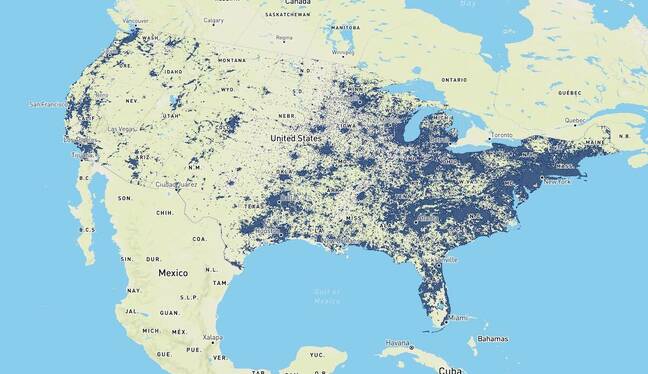This article is more than 1 year old
Amazon opens its ad-hoc Wi-Fi-sipping Sidewalk mesh to all manner of gadgets
A reminder you can still opt-out
Amazon says its Sidewalk mesh network of Echo smart speakers and Ring doorbells can now cover nine out of 10 Americans, and is ready for broader integration with third-party device makers.
On Tuesday, Amazon opened applications for hardware development test kits, which companies could use to validate the Sidewalk network and prototype products that take advantage of it.
The e-tail giant has been building the ad-hoc network for a few years now. It works by automatically detecting and connecting neighboring Echo and Ring devices in your and other's homes over Bluetooth and 900MHz LoRa. Initially, the idea was that even if your Ring doorbell lost internet connectivity, it could continue to communicate with Amazon's servers via your neighbor's broadband, via their Echo smartspeaker Ring device.
Now Amazon is moving to commoditize the network and is targeting vendors that are building devices that aren't well served by existing connectivity options — namely Wi-Fi or Bluetooth — alone. For example, rather than relying on a cellular modem as a backup for when Wi-Fi isn't available, a home security vendor could integrate Sidewalk into their platform to keep your devices connected if your internet goes down. (Well, assuming your neighbors aren't also suffering an internet outage.)
Some of the first third-party devices built for Sidewalk will include an environmental sensor for monitoring air quality and water leaks from a company called Netvox; an asset tracking device built by OnAsset called Sentinel 200; and a smart door lock from Primax. And as you might expect, the more devices using the networking, the wider its reach.
- Microsoft promises it's made Teams less confusing and resource hungry
- OneWeb lofts last batch of satellites to enable global internet service
- You just gonna take that AWS? Let Microsoft school your users on cloud security?
- Amazon lays off another 9,000, because why not?
Alongside the test kits, Amazon is also rolling out several software and hardware developer tool kits, built in collaboration with leading chipmakers, to facilitate the integration of Sidewalk radios and APIs into existing products. The service also works with the company's IoT Core platform, so that Sidewalk connected devices can tie directly into cloud services running on AWS.
Since we first covered the network back in 2020, prior to its launch, Amazon says Sidewalk has grown to reach roughly 90 percent of the US population, and it has published maps to back those claims up.
One of the reasons the web behemoth has been able to cover such a large slice of the US so quickly is because Amazon started automatically enabling Sidewalk on all customer devices by default back in 2021. If you've got an Echo smart speaker or Ring appliance in your home, you're probably already using Sidewalk without even realizing it.
If you're not keen on letting some strangers' tech tap into your Wi-Fi or chip away at your broadband connectivity, you can still opt out of the program by following these instructions in the Alexa app. With that said, Sidewalk's bandwidth appetites are fairly modest, reportedly consuming up to 80Kbps with a limit of 500MB a month. But with third-parties now getting their hands on the service, we expect Amazon may change those limits before long.
There are also privacy concerns associated with building out a mesh network of this kind. While Amazon says it's incorporated several layers of privacy and security to protect user data and prevent snooping by others using the network, as we've previously reported, privacy advocates have offered mixed reviews and raised concerns about potential abuse. ®

